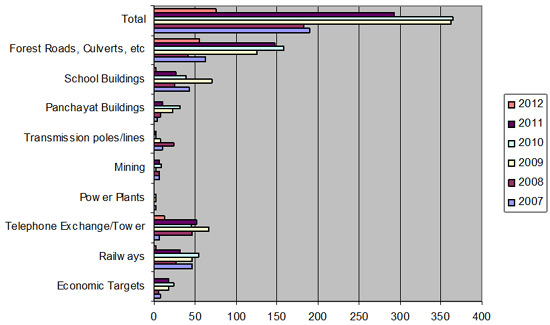http://dawn.com/2012/06/19/rs33bn-tax-evaded-in-2010-11/
ISLAMABAD
As a result of these irregularities and tax evasion, the FBR had failed to
achieve the revenue collection target of Rs1,588 billion for the year.
The shortfall in the revenue collection that the tax machinery had reported
in the audit year 2010-11 was over Rs35 billion, which was almost the same
amount detected by the auditors. If the FBR officials had plugged in the tax
evasion, the revenue target for 2010-11 could be achieved.
Taking clue from this, the FBR is facing a similar revenue shortfall in the
outgoing fiscal year as well.
Tax experts say the dodging of such a huge amount is not possible without
the connivance of FBR officials.
They believe that officials tasked with generating revenue have instead
aided a large number of people to evade duty and taxes by allowing use of
non-assessment and short-assessment.
Besides delay in adjudication proceedings, non-recovery of adjudged revenue
and inadmissible tax adjustment have been allowed there to get away with
evasion.
The office of the Auditor General of Pakistan
This amount includes Rs4.185 billion audit observation in respect of
inadmissible exemption/concessions in customs duties in 1,906 cases in the year
2010-11.
An amount of Rs 9.387 billion was detected because of non-disposal of
confiscated goods/vehicles in 3,089 cases.
The report for the year 2011-12 unearthed an irregularities of an amount of
Rs14.490 billion because of procedural and financial irregularities in audit of
focused areas — bank guarantee, indemnity bonds, bonded warehouses and
e-customs.
At the same time, an amount of Rs2.652 billion non/short realisation of
advance tax on imports was observed in 3,374 cases.
The audit report shows inadmissible payment of rebate in 81 cases to the
tune of Rs242 million; non-realisation of government revenue of Rs554 million
in 188 cases due to non-encashment of bank guarantees/post-dated cheques; a
revenue loss of Rs134 million because of short realisation of revenue due to
under valuation of imported goods.
The report also shows the non-realisation of government revenue on failure
to submit re-warehousing certificate to the tune of Rs3.074 billion in 2010-11.
Another amount of Rs447 million has been detected to have not been realized on
import, export without analysis certificate in 83 cases.It was observed that an
amount of Rs142 million revenue loss occurred to exchequer due to un-lawful permission
to avail the facility of two manufacturing bond licenses; irregularities of an
amount of Rs802 million in six customs offices detected in advance
collection/adjustments of customs duties; and non-realisation of surcharge in
43 cases to the tune of Rs29 million.
An mount of Rs116 million has not been collected in 65 cases of sales tax;
an amount of Rs17.570 million loss to exchequer because of inadmissible
exemption of sales tax to pharmaceutical manufacturers; Rs1.2 million because
of un-authorised expenditure on account of POL in excess of ceiling.
The report also points out that Rs2.3 million because
of non-short deposit of income tax in government exchequer by eight tax
offices.